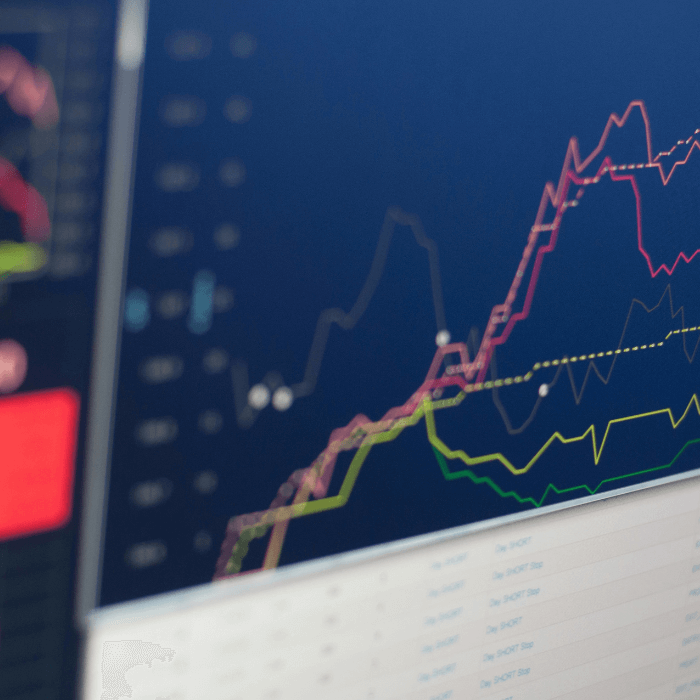
When planning for your retirement, it is essential to consider a range of investment options to ensure the potential of a secure and comfortable future. Precious metals, most notably gold, have long been valued for preserving wealth and providing financial stability over the long term. Incorporating precious metals into your portfolio as part of your retirement strategy could offer benefits, particularly in diversifying your investments and providing potential stability when traditional investments fluctuate.
This article discusses six ways in which you could include precious metals in your retirement planning, focusing on options such as Gold SIPPs, ETCs, and physical gold. Additionally, it explores how these options could serve to complement other investments in creating a balanced and diverse portfolio.
1. Gold SIPP
A Self-Invested Personal Pension (SIPP) is a flexible type of pension plan that offers you more control over your investment choices than many other pension options. Unlike traditional pensions, which pension providers manage, a SIPP allows you the option to select and manage your investments, offering you a more tailored approach. This means you can include a range of assets, including gold, as part of your retirement savings strategy. As with any gold investment, this diversification could offer the potential of shielding your other investments from wider market volatility.
Key features of a Gold SIPP
The Royal Mint offers a specialised 'Gold for Pensions' service, which includes the option to invest in a Gold SIPP. This service allows you to incorporate gold bullion and coins into your pension portfolio. The Gold SIPP can provide an alternative way to tailor your investment strategy to your risk tolerance and financial goals, while also benefiting from tax relief on contributions. This is because the investments have the potential to grow in a tax-efficient manner until you begin withdrawing funds upon which time tax may be payable. Also, managing your investments through a SIPP may result in lower management fees than other pension options.
Pros and cons of a SIPP
As mentioned, the primary benefits may be the tax relief on contributions, combined with potentially lower management fees, which could enhance your overall returns. In addition, the ability to select your own investments and tailor your portfolio may be appealing to some. However, there are some possible drawbacks. Because you have more control over the portfolio, you ideally need a solid understanding of the various investment options and regulatory requirements which apply to you and understanding this takes time. Lastly, as with any investment, the gold market can also be volatile, and price fluctuations may affect the stability of your retirement savings.
2. Gold IRA for U.S. Investors
An Individual Retirement Account (IRA) is a type of investment account specifically designed to help individuals in the United States save for retirement. Similar to a SIPP, an IRA allows investors to include gold and other precious metals in their retirement savings, providing an opportunity to diversify their portfolio. While traditional IRAs may hold stocks, bonds, or mutual funds, a Gold IRA enables investors to directly invest in physical gold, silver, platinum, or palladium.
Key features of a Gold IRA
A Gold IRA functions similarly to a SIPP but is specific to the U.S. market. It offers the possibility of tax advantages, including potential tax deductions on contributions and tax-deferred growth of investments. This account type allows investors to tailor their portfolios according to their individual risk tolerance and investment goals, including the option to hold physical precious metals.
Pros and cons of a Gold IRA
The primary suggested benefit of an IRA is the tax treatment as contributions may be tax-deductible, and the growth of investments is tax-deferred until withdrawals are made during retirement. This means it has the potential to offer the benefits of any gold investment including diversification and potentially hedging your portfolio against inflationary risk. There are drawbacks however as having more control over your investments means the management of the IRA involves compliance with IRS rules, which can be complex. In addition, as with any gold investment, it can be volatile and the price fluctuations will impact your portfolio, especially in the short term.
3. Gold ETC
A Gold Exchange Traded Commodity (ETC) is a financial product that offers investors exposure to gold, allowing them to gain the benefits of gold investment without directly holding the metal. Gold ETCs are similar to ETFs but are specifically designed to track the price of a commodity, in this case, gold. They are traded on major stock exchanges, providing investors with an alternative way to invest in gold.
Key features of a Gold ETC
Gold ETCs, such as the Royal Mint's RMAU, are backed by physical gold, ensuring that each share represents a portion of actual gold held in custody. This backing provides investors with the assurance that their investment is linked to tangible assets. Gold ETCs offer the liquidity and ease of trading associated with stocks, allowing investors to buy and sell shares during market hours. This makes them a popular choice for those looking to diversify their portfolios without the need for storage or insurance associated with physical gold ownership.
Pros and cons of a Gold ETC
One of the main suggested advantages of Gold ETCs is their liquidity, as shares can be bought or sold quickly on the stock market. They also generally have lower management fees compared to other gold investment options, such as physical gold or actively managed funds. However, unlike holding physical gold, owning a Gold ETC does not provide direct possession of the metal, which may be less appealing for those who prefer tangible assets. Additionally, as with any market-traded security, the value of Gold ETCs can be volatile, influenced by factors such as gold price fluctuations and market sentiment.
4. Physical gold
No list of gold investment options would be complete without discussing physical gold, which involves purchasing tangible assets such as gold bullion coins or bars. This time-tested approach is appealing to many as physical gold is often considered a reliable store of wealth over time and a tangible asset that can be held outside traditional financial systems.
Key features of Physical Gold
Physical gold offers several possible advantages, including direct ownership and the ability to personally store and manage the asset. Products such as gold Britannia or Sovereign coins, available from The Royal Mint, are recognised worldwide and may provide investors with a sense of security and peace of mind. These coins are not only valuable for their metal content but also hold potential numismatic value, which could increase over time.
Pros and cons of Physical Gold
As well as the tangible nature of physical gold, coins such as the Britannia and Sovereign are not only valuable for their precious metal content but may also offer additional appeal due to their collectable nature. However, there are some potential drawbacks to consider, most notably storing physical gold requires secure facilities which can involve additional costs for safekeeping and insurance. In addition, the process of buying and selling physical gold is less liquid compared to digital assets, like Gold ETCs, and transaction costs may impact overall returns.
5. Gold in a Diverse Retirement Plan
Generally speaking, incorporating gold into your retirement plan could offer advantages, especially when combined with other investment assets. As we have covered previously, diversification should be a key principle in any investment portfolio, and including gold in your assets may provide additional protection against market volatility.
Key Benefits of Including Gold
Gold has traditionally been seen as a safe-haven asset during times of economic uncertainty and could help offer some stability when other investments are underperforming. As a tangible asset, gold has the potential to provide a hedge against currency fluctuations and geopolitical risks, something which may be particularly important in retirement planning, where preserving wealth and ensuring steady returns over longer periods are crucial.
Balancing Gold with Other Investments
Although gold can offer benefits, it is important to ensure a well-rounded and balanced portfolio as over-reliance on a single asset class, including gold, can expose you to risk. A diverse portfolio should include a mix of asset types to help manage risk effectively and help you achieve your long-term goals. Before making any investment, you should consider working with a financial adviser to develop a retirement plan that aligns with your own risk tolerance and investment objectives and perhaps consider incorporating gold as part of a broader strategy.
6. SASS Pension Accounts for Company Directors
A Small Self-Administered Scheme (SASS) is a type of occupational pension scheme typically used by company directors and key employees. SASS pension accounts have the potential to offer a higher degree of flexibility and control over the investment of pension funds, possibly making them an attractive option for business owners who wish to include alternative assets, such as precious metals, in their retirement planning.
Key Features of SASS Pension Accounts
SASS accounts allow for a diverse range of investment options, including direct investment in gold and other precious metals. This flexibility enables company directors to tailor their pension investments according to their specific financial goals and risk appetite. The Royal Mint provides options to include gold bullion and coins as part of the SASS investment strategy, benefiting from some of the possible tax efficiencies associated with pension contributions and growth.
Pros and Cons of SASS Pension Accounts
The main suggested advantages of a SASS include the ability to invest in a wide range of assets, including gold, which has the potential to provide diversification and a hedge against market volatility. SASS accounts also offer potential tax benefits, similar to other pension schemes, enhancing the possibility of long-term investment growth. However, managing a SASS requires a good understanding of regulatory requirements and investment management, which can be complex and time-consuming. Additionally, as with any investment in precious metals, the value of gold can fluctuate, which will impact the value of the pension fund.
Conclusion
Incorporating precious metals into your retirement plan, whether through a SIPP, IRA, ETC, physical gold, or a SASS account, could potentially provide a hedge against economic uncertainty and market volatility. Each option is unique and has both benefits and considerations and it is essential to choose the investment strategy that aligns with your financial goals and risk tolerance. Consulting with a financial adviser is recommended to ensure that your retirement plan is well-balanced and capable of meeting your long-term needs.
At The Royal Mint, we provide a range of wealth management solutions to cater for all life stages. From growing a golden nest egg for a loved one, to diversifying your portfolio, or planning for a well earned retirement, investing in precious metals with The Royal Mint can help you prepare for a brighter future.
The contents of this article are accurate at the time of publishing, are for general information purposes only and do not constitute investment, legal, tax or any other advice. Before making any investment or financial decision, you may wish to seek advice from your financial, legal, tax and/or accounting advisers.




